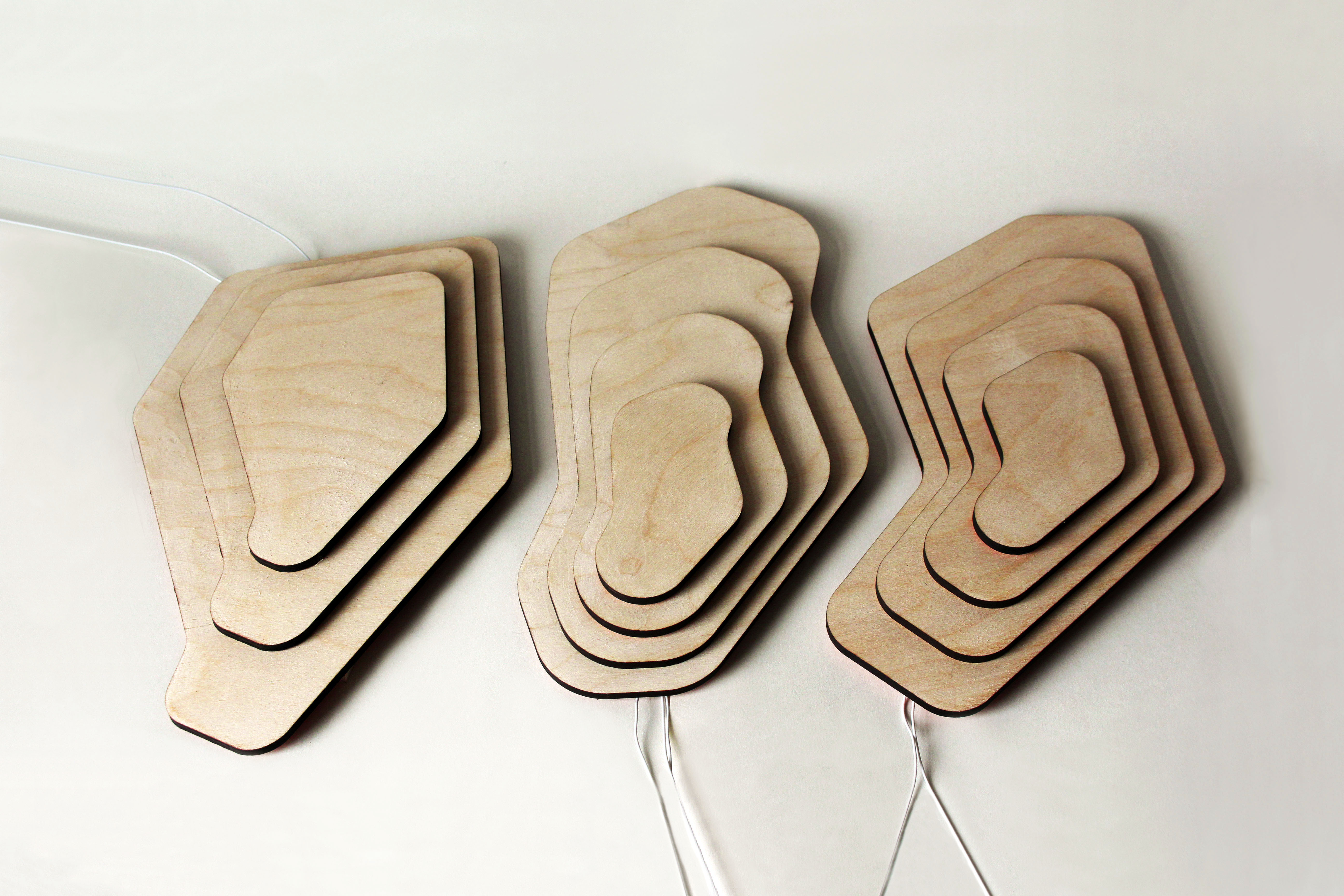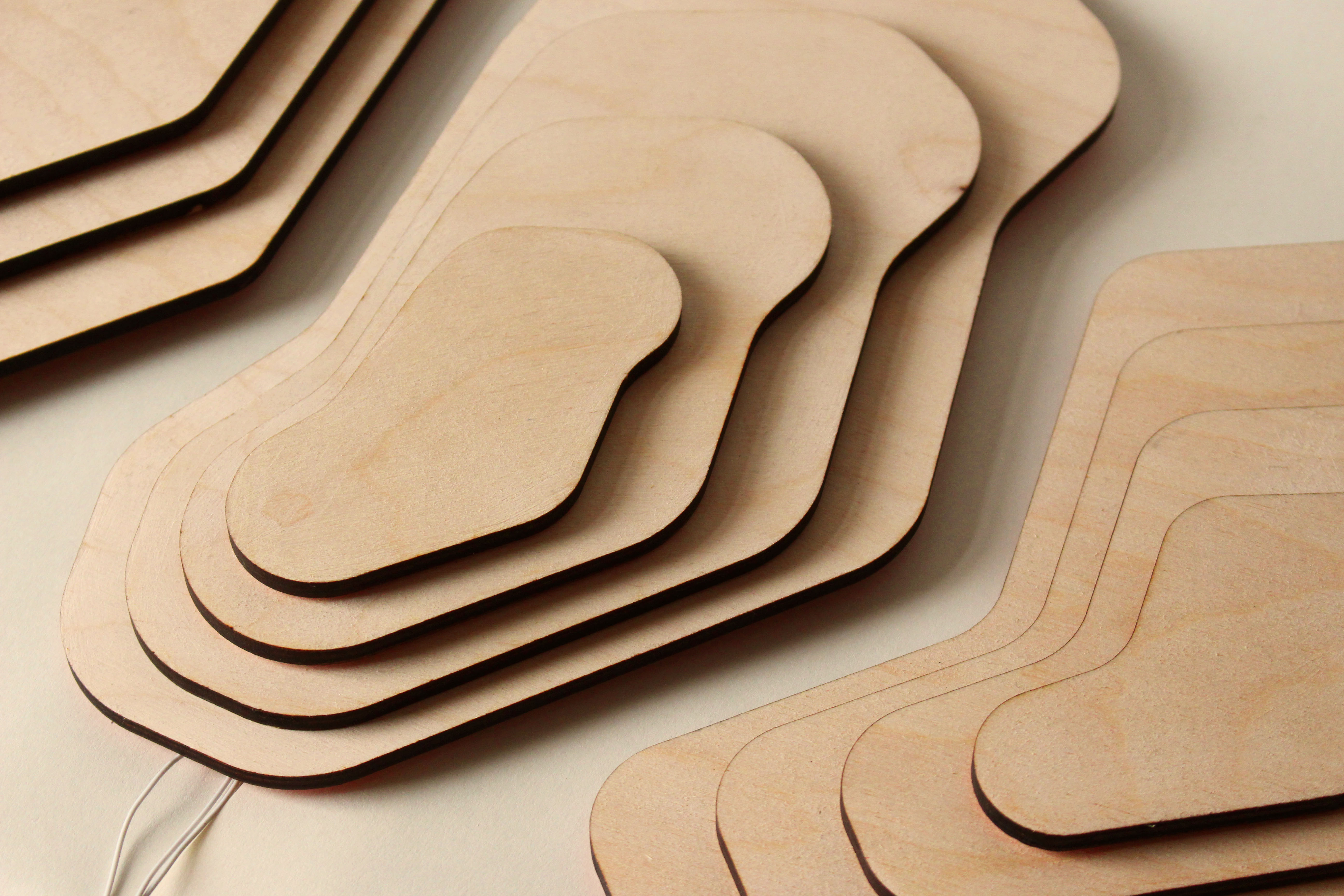Sculptural Sound
The inspiration for this project came from the idea of creating a controller that didn’t feel electronic. I didn’t want the method of control to be explicit, but exploratory. It needed to be driven by form and material, so I explored capacitive sensing. This allows technology to be discrete, and the controllers could be made out of something natural and tactile. I created a series of sculptural layered objects, with capacitive sensors embedded inside. The shapes are loosely inspired by landscapes, and connected to maxMSP to create soundscapes when touched.
produced by: Isabel McLellan
Concept
Within this project I have tried to explore the idea of control in a variety of ways. The sculptural controllers are tactile and invite touch without explicitly saying so, they do not have labels or buttons like many controllers. They are also made of layers, which due to the nature of capacitive sensing can lead to both deliberate or incidental interference with one another. I have used
this within the piece to multiply the sound waves of each layer when more than one is triggered to create a new sound that they couldn’t individually.
I have also created a control board for the control boards, which is in stark contrast in terms of it’s purpose and design. This controller is precise and explicit, there are LEDs indicating which potentiometer belongs to exactly each layer, and the sensitivity of the capacitance and sensing power of them can be finely tuned. This allows for editing of how the user would like to interact with the piece, or how they might like someone else to. At their most sensitive they can be triggered just by hovering a hand above them, and in combination with different sounds corresponding to each layer, creating a feeling of touching something, without actually touching it.
Reflections
Working with sculptural forms and natural materials alongside technology has been the most exciting part of this process, and one I would like to continue through into my future practice.
Capacitive sensing has been learning curve, it is can be highly sensitive and temperamental, often seemingly unpredictable. It has taught me to think about the structure of my circuits and how to build enclosures for protection, and to prevent certain wires from crossing one another. This is an issue I still struggle with as in this case the wires themselves carry capacitance and can be triggered through touch, so in the future I would like to explore custom circuit enclosures with more insulation that are custom to the needs of the project.
To carry this project on I would like to explore a wider range of forms and materials, testing more fluid and 3D shapes. I would like to explore different ways of interacting with the materials that are prompted by their form. It has also been extremely valuable to learn about communication and sending data back and forth between programs, in this case allowing me to turn the sculptures into soundscapes by getting the serial of Arduino to talk to the console of MaxMSP. In the future I would like to learn more about data processing and handling between these two programs, as at the current stage of the program a value is constantly being sent to Max, resulting in a large amount of data for it to process each second.
This project also taught me about the benefits and drawbacks of breakout boards, the one I used allowed me to have eight capacitive sensor layers / patches, far more than if I constructed my own using the Arduino’s analog pins. However, the CAP1188 did not allow me to get the raw data from the chip, i.e. the value of the capacitance, only 1 for touched or 0 for not touched.Values on a larger range would allow more interesting explorations in Max, e.g. altering the pitch or volume smoothly the closer you get to the layer. A second board tested did allow raw data but did not seem to be as powerful when incorporated into the sculptures and circuit.
References
-Adafruit CAP1188: https://learn.adafruit.com/adafruit-cap1188-breakout/overview
-Learning to connect capacitive sensing and MaxMSP: https://cycling74.com/forums/capacitive-sensing-with-arduino-and-maxmsp





































































